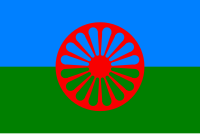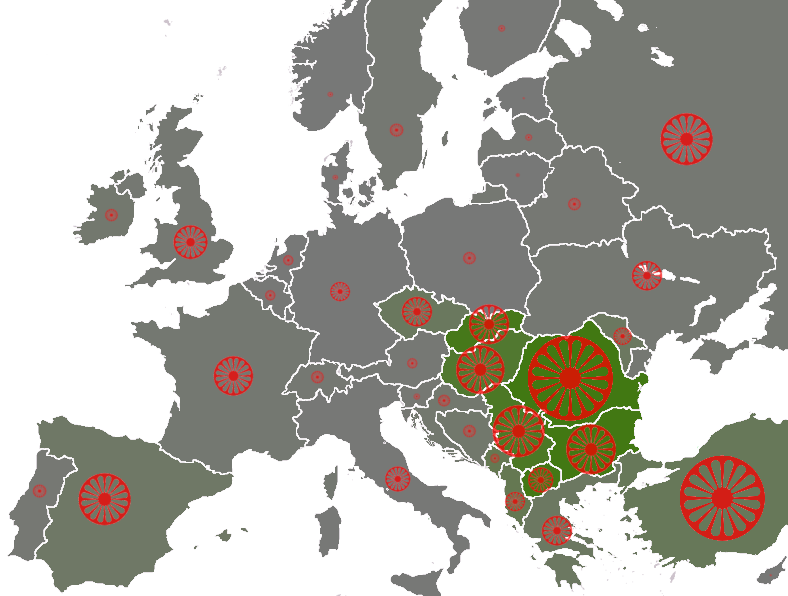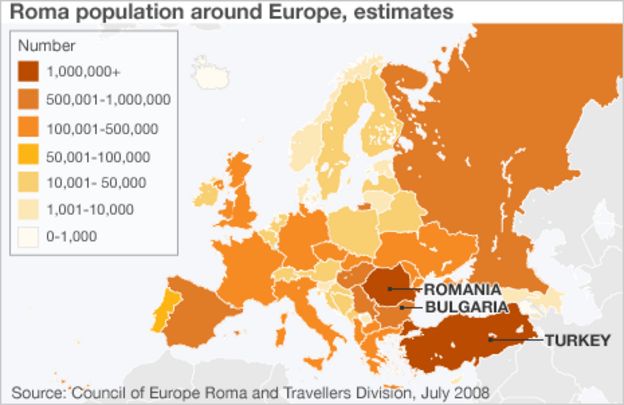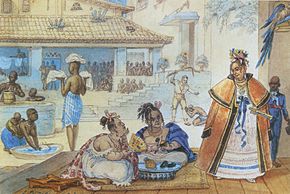- ISIS (ISIL/IS) Islamic State will convert the Native Americans, Hawaiians and Inuit Eskimos of United States of America (US/USA) Canada and Greenland to Islam & Become Muslims
from http://indiancountrytodaymedianetwork.com/2015/02/06/islamic-state-fighter-says-jihad-coming-indian-country-159036
On January 30, Under the Black Flag reported on an interview with an Islamic State fighter who has more than one name, something often seen in that part of the world. Nurat Nazarov, or Abu Kholidi Kulobi, told the radio station that he is fighting to spread Islamic law around the world. The entire world population, he asserted, will be subjugated to the caliphate the Islamic Republic claims to have reestablished.
He then plunged into a digression about American Indians for no particular reason that was apparent from the blog post. Without being asked anything about Indians, he delivered himself of this:
Even the [Native Americans] will have to live under Shari'a. We will take them tubeteikas [Central Asian caps, worn in Tajikistan, Uzbekistan, Kyrgyzstan, and Kazakhstan], we will build mosques for them, and we will live with them according to the laws of Allah.
Indians have gotten an increasing amount of attention from Islam of late. Just this last November, President Recep Tayyip Erdoğan of Turkey was ridiculed in these pages and elsewhere for claiming the Taino people in the Caribbean discovered a Muslim before they discovered Columbus.
RELATED: Muslims and Christians Fight Over Which Was Discovered First
Faced with ridicule at home and abroad, Erdoğan doubled down on his revision of history.
A quick check of the Internet for evidence that Islam is following Christianity into Indian country turned up several notices of a man who introduces himself as follows:
I am a Cherokee Blackfoot American Indian who is Muslim. I am known as Eagle Sun Walker. I serve as a Pipe Carrier Warrior for the Northeastern Band of Cherokee Indians in New York City.
We’ve made the decision not to call him by his other name, but that name is neither Cherokee nor Siksika. “Pipe Carrier Warrior” is not an office in the Cherokee Nation nor did that office exist before the Cherokee Constitution declared a republic.
The Pipe Carrier Warrior claims that “Tallahassee” is an “Islamic” word that means, “Allah will deliver you.” The ignorant people who live there believe “Islamic” is not a language and “Tallahassee” comes from a Creek dialect.
It’s either an honor or an embarrassment that American Indians would be suddenly getting so much attention from Islam, but the attention Mr. Nazarov or Kulobi describes is a bit different from just rewriting history. It sounds like aggression, conversation by force.
Somebody should tell him that American Indians have been there, had that done to them, and have forced conversion t-shirt collections second to none in the world. It’s not likely that Indians would go quietly into a situation where RFE/RL are forced to broadcast in the indigenous languages of the Americas.
Read more at
http://indiancountrytodaymedianetwork.com/2015/02/06/islamic-state-fighter-says-jihad-coming-indian-country-159036
ISIS (ISIL/IS) Islamic State or Daesh, Al Qaeda, Hezbollah, Islam and Muslims are now in Latin America like Mexico. Southern Mexico is now the land of the Mayan Muslims. The vengeance of the Maya with the help of Islam and groups like ISIS will wreck havoc on Mexico, Latin America and the United States, the Philippines and Europe
Sunday, April 9, 2017
ISIS Islamic State (ISIL / Daesh) Al Qaeda, Islam and Muslims in Europe
ISIS Islamic State (ISIL / Daesh) Al Qaeda, Islam and Muslims in Latin America and Europe
ISIS Islamic State (ISIL / Daesh) Al Qaeda, Islam and Muslims in Europe
ISIS Islamic State (ISIL / Daesh) Al Qaeda, Islam and Muslims in Europe
ISIS Islamic State (ISIL / Daesh) Al Qaeda, Islam and Muslims in Europe
ISIS Islamic State (ISIL / Daesh) Al Qaeda, Islam and Muslims in Europe
ISIS Islamic State (ISIL / Daesh) Al Qaeda, Islam and Muslims in Europe
ISIS Islamic State (ISIL / Daesh) Al Qaeda, Islam and Muslims in Europe
ISIS Islamic State (ISIL / Daesh) Al Qaeda, Islam and Muslims in Europe
ISIS Islamic State (ISIL / Daesh) Al Qaeda, Islam and Muslims in Latin America and Europe
ISIS Islamic State (ISIL / Daesh) Al Qaeda, Islam and Muslims in EuropeISIS Islamic State (ISIL / Daesh) Al Qaeda, Islam and Muslims in Europe
ISIS Islamic State (ISIL / Daesh) Al Qaeda, Islam and Muslims in Europe
ISIS Islamic State (ISIL / Daesh) Al Qaeda, Islam and Muslims in Europe
ISIS Islamic State (ISIL / Daesh) Al Qaeda, Islam and Muslims in Europe
ISIS Islamic State (ISIL / Daesh) Al Qaeda, Islam and Muslims in Europe
ISIS Islamic State (ISIL / Daesh) Al Qaeda, Islam and Muslims in Europe
Islam: Romani or Roma People (Gypsies): The Indigenous Muslims / Moslems and Potential Islamic State ISIS/ISIL or Daesh and Al Qaeda Terrorist Militants in the Balkans and Europe
Islam: Romani or Roma People (Gypsies): The Indigenous Muslims / Moslems and Potential Islamic State ISIS/ISIL or Daesh and Al Qaeda Terrorist Militants in the Balkans and Europe

The Romani (also spelled Romany; /ˈroʊməni/, /ˈrɒ–/), or Roma, are a traditionally nomadic ethnic group, living mostly in Europe and the Americas and originating from the northern regions of the Indian subcontinent,[52][53][54] presumably from where the states Rajasthan, Haryana, and Punjab exist today.[53][54] The Romani are widely known among English-speaking people by the exonym “Gypsies” (or “Gipsies“), which some people consider pejorative due to its connotations of illegality and irregularity.[55]

Romani flag created in 1933 and accepted by the 1971 World Romani Congress
|
|
| Total population | |
|---|---|
| 2–20 million[1][2][3][4] | |
| Regions with significant populations | |
| 1,000,000 estimated with Romani heritage (5,400 per 2000 census[5])[6] |
|
| 800,000[7] | |
| 700,000–5,000,000[8] /~2,750,000/[9][10] |
|
| 650,000–1,500,000[8][11][12][13] | |
| 621,573–2,000,000[8][14][15] | |
| 350,000–500,000[16][17] | |
| 325,343–800,000[18][19] | |
| 315,583–990,000[20][21] | |
| 300,000–350,000[22] | |
| 90,000–300,000 /~225,000/[8][23] |
|
| 182,766–1,200,000[8][24] | |
| 147,604–500,000 /~250,000/[25][26] |
|
| 120,000–180,000[27] | |
| 120,000–140,000[8][28] | |
| 105,738–600,000[8][29][30] | |
| 53,879[8][31] | |
| 50,000–100,000[32] | |
| 47,587–400,000[8][33] | |
| 40,370 (Romani speakers)[34]–300,000[35] | |
| ~300, 000[36] | |
| 40,000–70,000[8][37] | |
| 40,000[38] | |
| 32,000–48,000[8] | |
| 15,000–60,000[8][39] | |
| 12,778–200,000[8][40] | |
| 16,975–40,000[8][41] | |
| 8,864–60,000[8][42] | |
| 8,301–150,000[8][37][43] | |
| 5,255–80,000[44][45] | |
| 11,000–50,000 | |
| 5,000–25,000[46] | |
| 15,850[47] | |
| ~8,000[48] | |
| 2,300[49] | |
| <3,000[50] | |
| Languages | |
| Romani language, Para-Romani varieties, languages of native regions | |
| Religion | |
| Of the religious predominantly Christianity[51] Islam[51] Shaktism branch of Hinduism[51] |
|
| Related ethnic groups | |
| Dom, Lom, Domba; other Indo-Aryans | |
Since the 19th century, some Romani have also migrated to the Americas. There are an estimated one million Roma in the United States;[6] and 800,000 in Brazil, most of whose ancestors emigrated in the nineteenth century from eastern Europe. Brazil also includes some Romani descended from people deported by the government of Portugal during the Inquisition in the colonial era.[58] In migrations since the late nineteenth century, Romani have also moved to other countries in South America and to Canada.[59][page needed]
In February 2016, during the International Roma Conference, the Indian Minister of External Affairs stated that the people of the Roma community were children of India. The conference ended with a recommendation to the Government of India to recognize the Roma community spread across 30 countries as a part of the Indian diaspora.[60]
The Romani language is divided into several dialects, which add up to an estimated number of speakers larger than two million.[61] The total number of Romani people is at least twice as large (several times as large according to high estimates). Many Romani are native speakers of the language current in their country of residence, or of mixed languages combining the two; those varieties are sometimes called Para-Romani.

Names
Main article: Names of the Romani people
Exonyms
- French bohème, bohémien, from the Kingdom of Bohemia, whence they came, carrying writs of protection from King Sigismund of Bohemia.[63]
- French gitan, English gypsy, Spanish gitano, Italian “gitano”, Turkish kipti, all from Greek Αἰγύπτιος Aigýptios “Egyptian” (corrupted form: Γύφτος Gýftos), and Hungarian faraonépe from Greek φαραώ pharaó “pharaoh” – referring to their allegedly Egyptian provenance.[63]
- English tzigane (for Hungarian gypsies), Spanish zíngaro or cíngaro, French tzigane, Old High German zigeuner, German zigeuner, Dutch zigeuner, Old Church Slavic ациганинъ, Italian zingaro, Romanian țigan, Hungarian cigány, Croatian “cigan”, Czech “cikán”, Portuguese cigano, Turkish çingene, Slovak cigán or cigáň, Venetian singano, Russian цыгане, Ukrainian цигани, Georgian ციგანი; from Greek ἀθίγγανος athínganos (corrupted form: τσιγγάνος tsingános), “untouchable“.[63][64][65][66]
- Arabic Nawar and Zott.
Endonyms
- Rom means man or husband in the Romani, it has the variants dom and lom, related with the Sanskrit words dam-pati[lord of the house, husband], dama[to subdue], lom[hair], lomaka(hairy) loman, roman [hairy]. romaça [man with beard and long hair].[67]
- Another possible origin is from Sanskrit डोम doma [member of a low caste of travelling musicians and dancers].
- Sanskrit सिनधु (sindhu) is a river or stream of water in general. In particular, it denotes the river Indus and the country around it (commonly called Sindh).[citation needed]
Romani usage
In the Romani language, Rom is a masculine noun, meaning ‘man of the Roma ethnic group’ or ‘man, husband’, with the plural Roma. The feminine of Rom in the Romani language is Romni. However, in most cases, in other languages Rom is now used for people of all genders.[68]Romani is the feminine adjective, while Romano is the masculine adjective. Some Romanies use Rom or Roma as an ethnic name, while others (such as the Sinti, or the Romanichal) do not use this term as a self-ascription for the entire ethnic group.[69]
Sometimes, rom and romani are spelled with a double r, i.e., rrom and rromani. In this case rr is used to represent the phoneme /ʀ/ (also written as ř and rh), which in some Romani dialects has remained different from the one written with a single r. The rr spelling is common in certain institutions (such as the INALCO Institute in Paris), or used in certain countries, e.g., Romania, to distinguish from the endonym/homonym for Romanians (sg. român, pl. români).[70]

Population and subgroups
Romani population
Main article: Romani populations
For a variety of reasons, many Romanies choose not to register their
ethnic identity in official censuses. There are an estimated four
million Romani people in Europe (as of 2002),[90] although some high estimates by Romani organizations give numbers as high as 14 million.[91] Significant Romani populations are found in the Balkans,
in some Central European states, in Spain, France, Russia and Ukraine.
Several million more Romanies may live out of Europe, in particular in
the Middle East and in the Americas.[92]Romani subgroups
Like the Roma in general, many different ethnonyms are given to subgroups of Roma. Sometimes a subgroup uses more than one endonym, is commonly known by an exonym and/or erroneously by the endonym of another subgroup. The only name approaching an all-encompassing self-description is Rom.[93] Even when subgroups don’t use the name, they all acknowledge a common origin and a dichotomy between themselves and Gadjo (non-Roma).[93] For instance, while the main group of Roma in German-speaking countries refer to themselves as Sinti, their name for their original language is Romanes.
Subgroups have been described as, in part, a result of the Hindu caste system, which the founding population of Rom almost certainly experienced in their South Asian urheimat.[93][94]
Debret, Jean-Baptiste (c. 1820), Interior of a gipsy’s house in Brazil.
Volkers, Emil (c. 1905), Camping gypsies near Düsseldorf, Germany.
Gypsies camping. Welsh Romanies near Swansea, 1953


Other endonyms for Romani include, for example:
- Ashkali (or “Balkan Egyptians” [sic]) – Albanian-speaking Roma communities in the Balkans[98]
- Bashaldé – Hungarian-Slovak Roma diaspora in the US from the late 19th century.[99]
- Calé is the endonym used by both the Spanish Roma (gitanos) and Portuguese Portuguese Roma ciganos;[100] Caló is “the language spoken by the calé.
- Erlides (also Arlije, Yerlii or Arli) in Greece
- Kaale, in Finland and Sweden.[100][93]
- Kale, Kalá, or Valshanange – Welsh English endonym used by some Roma clans in Wales.[101] (Romanichal also live in Wales.)
- Khorakhanè, Horahane or Xoraxai, also known as “Turkish Roma” or “Muslim Roma” – Greek Roma and Turkish Roma.[93]
- Lalleri, from Austria, Germany, and the western Czech Republic (including the former Sudetenland).
- Lovari, from Hungary,[102] known in Serbia as Machvaya, Machavaya, Machwaya, or Macwaia. [93]
- Luri, mainly in the Middle East.[93]
- Lyuli, in Central Asian countries.
- Rom in Italy.
- Roma in Romania, commonly known by majority ethnic Romanians as Țigani, including many subgroups defined by occupation:
- Boyash also known as Băieşi, Lingurari, Ludar, Ludari, or Rudari, who coalesced in the Apuseni Mountains of Transylvania. Boyash or băieşi is a Romanian word for “miners”. Lingurari means “spoon makers”,[citation needed] Ludar,Ludari, andRudari may mean “woodworkers” or “miners”.[103] (There is a semantic overlap due to the homophony and/or merging of lemmas with different meanings from at least two different languages: the Serbian rudar miner, and ruda stick, staff, rod, bar, pole (in Hungarian rúd,[104] and in Romanian rudă.[105]
- Churari,[106] from Romanian Ciurari, “sieve makers”, Zlătari “gold smiths”[93]
- Ursari (bear trainers, from Moldovan/Romanian urs “bear”),[93]
- Ungaritza blacksmiths and bladesmiths
- Argintari silversmiths.
- Aurari goldsmiths.
- Florari flower sellers.
- Lăutari singers.
- Kalderash, from Romaniancaldarar meaning tinsmith, tinker, kettlemaker; also in Bessarabia and Ukraine.
- Roma or Romové, Czech Republic
- Roma or Romská, Slovakia
- Romanichal, in the United Kingdom,[100][93] emigrated also to the United States, Canada and Australia[107]
- Romanisæl, in Norway and Sweden.
- Roms or Manouche (from manush “people” in Romani) in France.[93][108]
- Romungro or Carpathian Romani from eastern Hungary and neighbouring parts of the Carpathians[109]
- Sinti or Zinti, predominantly in Germany,[100][93] and Northern Italy; Sinti do not refer to themselves as Roma, although their language is called Romanes.[93]
Diaspora
Main article: Romani diaspora
The Roma people have a number of distinct populations, the largest being the Roma and the Iberian Calé or Caló, who reached Anatolia and the Balkans about the early 12th century, from a migration out of northwestern India beginning about 600 years earlier.[110][111] They settled in present-day Turkey, Greece, Serbia, Romania, Moldova, Bulgaria, Macedonia, Hungary and Slovakia,
by order of volume, and Spain. From the Balkans, they migrated
throughout Europe and, in the nineteenth and later centuries, to the
Americas. The Romani population in the United States is estimated at more than one million.[112]There is no official or reliable count of the Romani populations worldwide.[113] Many Romani refuse to register their ethnic identity in official censuses for fear of discrimination.[114] Others are descendants of intermarriage with local populations and no longer identify only as Romani, or not at all.
As of the early 2000s, an estimated 3.8[115][page needed] to 9 million Romani people lived in Europe and Asia Minor.[116][page needed] although some Romani organizations estimate numbers as high as 14 million.[117] Significant Romani populations are found in the Balkan peninsula, in some Central European states, in Spain, France, Russia, and Ukraine. The total number of Romani living outside Europe are primarily in the Middle East and North Africa and in the Americas, and are estimated in total at more than two million. Some countries do not collect data by ethnicity.
The Romani people identify as distinct ethnicities based in part on territorial, cultural and dialectal differences, and self-designation.[118][119][120][121]
*******
Religion
Christian Romanies during the pilgrimage at Saintes-Maries-de-la-Mer in France, 1980s
Beliefs
The ancestors of modern-day Romani people were previously Hindu, but adopted Christianity or Islam depending on their respective regions they had migrated through.[180] Muslim Roma are found in Turkey, Bosnia and Herzegovina, Albania, Egypt, Kosovo, Macedonia, and Bulgaria, forming a very significant proportion of the Romani people. In neighboring countries such as Greece most of the Romani inhabitants follow the practice of Orthodoxy. It is likely that the adherence to differing religions prevented families from engaging in intermarriage.[181]Balkans
Costume of a Romani woman (most likely Muslim Roma).
- Albania – The majority of Albania’s Roma people are Muslims.[186]
- Bosnia and Herzegovina and Montenegro – Islam is the dominant religion among the Roma.[187]
- Bulgaria – In northwestern Bulgaria, in addition to Sofia and Kyustendil, Christianity is the dominant faith among Romani people, though a major conversion to Eastern Orthodox Christianity among Romani people has occurred. In southeastern Bulgaria, Islam is the dominant religion among Romani people, with a smaller section of the Romani population, declaring themselves as “Turks”, continuing to mix ethnicity with Islam.[187]
- Croatia – Following the Second World War, a large number of Muslim Roma relocated to Croatia (the majority moving from Kosovo).[187]
- Greece – The descendants of groups, such as Sepečides or Sevljara, Kalpazaja, Filipidži and others, living in Athens, Thessaloniki, central Greece and Greek Macedonia are mostly Orthodox Christians, with Islamic beliefs held by a minority of the population. Following the Peace Treaty of Lausanne of 1923, many Muslim Roma moved to Turkey in the subsequent population exchange between Turkey and Greece.[187]
Muslim Romanies in Bosnia and Herzegovina (around 1900)
- Kosovo – The vast majority of the Roma population in Kosovo is Muslim.[187]
- Macedonia – The majority of Roma people are followers of Islam.[187]
- Romania – According to the 2002 census, the majority of Romani minority living in Romania are Orthodox Christians, while 6.4% are Pentecostals, 3.8% Roman Catholics, 3% Reformed, 1.1% Greek Catholics, 0.9% Baptists, 0.8% Seventh-Day Adventists.[188] In Dobruja, there is a small community that are Muslim and also speak Turkish.[187]
- Serbia – Most Roma people in Serbia are Orthodox Christian, but there are some Muslim Roma in Southern Serbia, who are mainly refugees from Kosovo.[187]
Other regions
In Ukraine and Russia the Roma populations are also Muslim as the families of Balkan migrants continue to live in these locations. Their ancestors settled on the Crimean peninsula during the 17th and 18th centuries, but then migrated to Ukraine, southern Russia and the Povolzhie (along the Volga River). Formally, Islam is the religion that these communities align themselves with and the people are recognized for their staunch preservation of the Romani language and identity.[187]Most Eastern European Romanies are Roman Catholic, Eastern Orthodox, or Muslim.[189] Those in Western Europe and the United States are mostly Roman Catholic or Protestant – in southern Spain, many Romanies are Pentecostal, but this is a small minority that has emerged in contemporary times.[185] In Egypt, the Romanies are split into Christian and Muslim populations.[190]
*******
Muslim Roma or Muslim Gypsies are Romani people who adopted Islam. Romanies have usually adopted the predominant religion of the host country. Islam among Romanies is historically associated with life of Romanies within the Ottoman Empire. Correspondingly, significant cultural minorities of Muslim Roma are found in Turkey, Bosnia and Herzegovina, Albania, Egypt, Kosovo, Republic of Macedonia, Bulgaria (by mid-1990s estimates, Muslim Roma in Bulgaria constituted about 40% of Roma in Bulgaria.[1]), Romania (a very small Muslim Romani group exist in the Dobruja region of Romania, comprising 1% of the country’s Romani population)[2]), Croatia (45% of the country’s Romani population[3]), Southern Russia, Greece (a small part of Muslim Roma concentrated in Thrace), Crimea and the Caucasus. Because of the relative ease of migration in modern times, Muslim Roma may be found in other parts of the world as well.
After the collapse of the Ottoman Empire in the parts where Islam is no longer a dominant religion Muslim Roma have found themselves under double discrimination, both on ethnic (Antiziganism) and religious grounds.[4]
Muslim Roma throughout Southern Europe call themselves Horahane Roma (“Turkish Roma”, also spelled as Khorakhane, Xoraxane, Kharokane, Xoraxai, etc.) and are colloquially referred to as Turkish Roma or Turkish Gypsies in the host countries
Subscribe to:
Posts (Atom)



















































